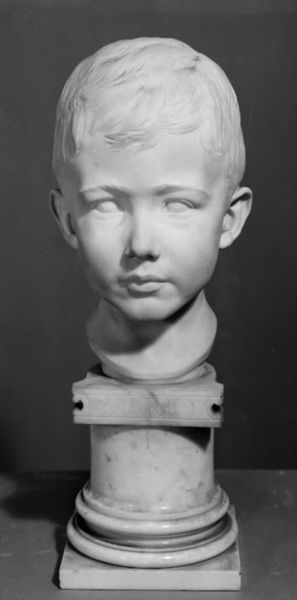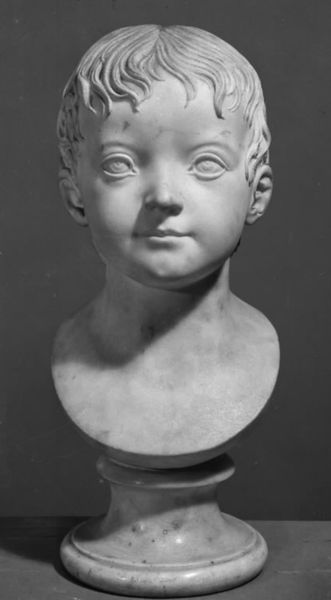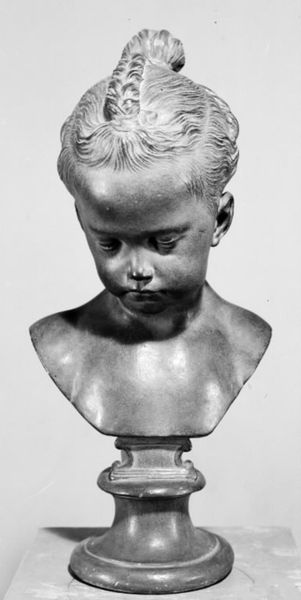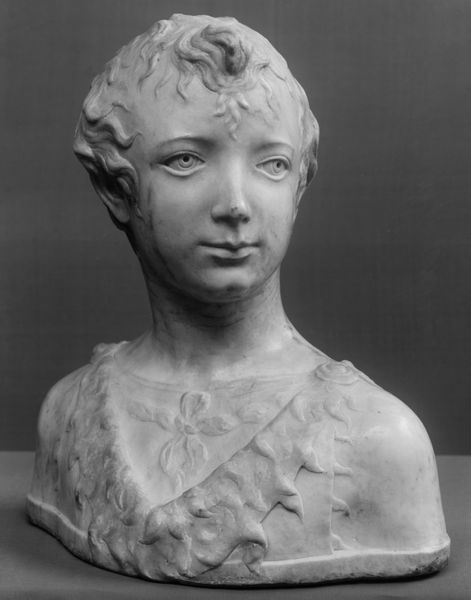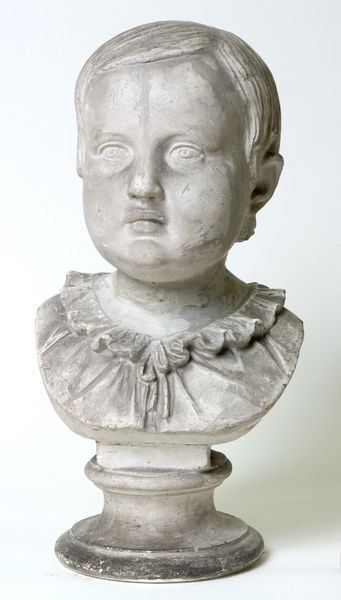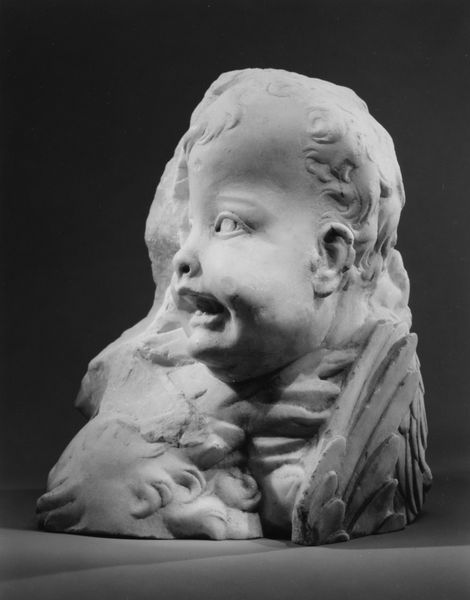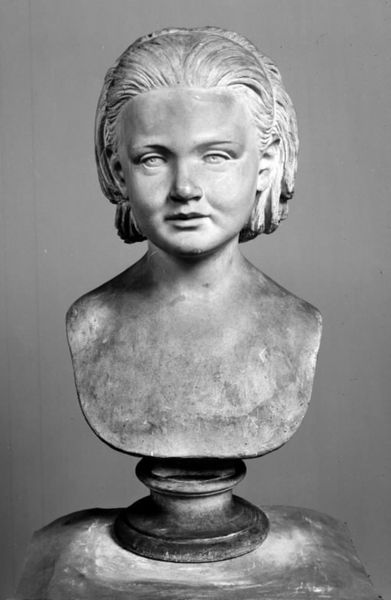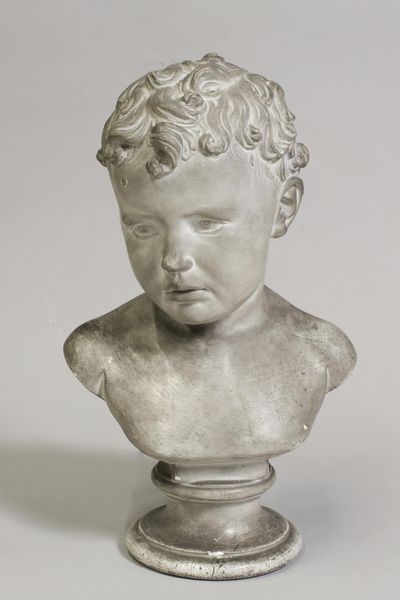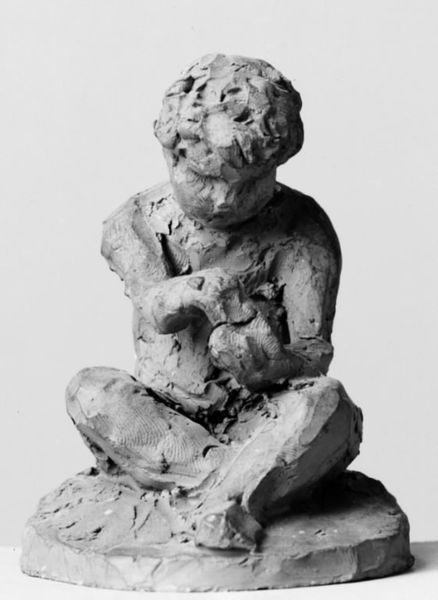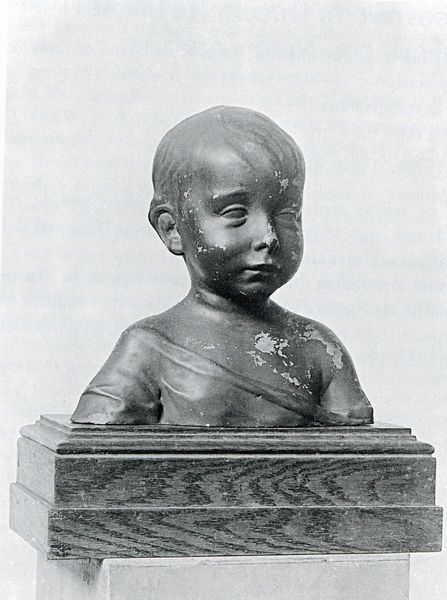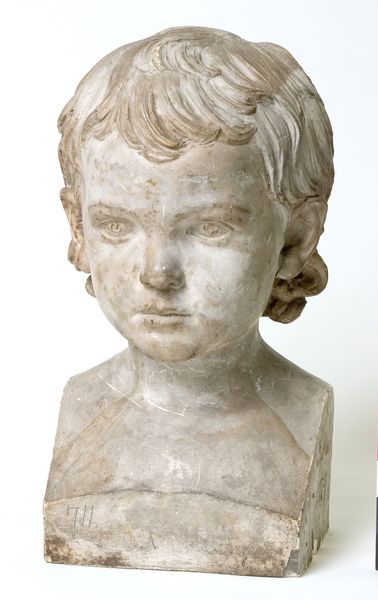
sculpture, marble
#
portrait
#
neoclacissism
#
sculpture
#
sculpture
#
marble
Dimensions: 18.5 cm (height) (Netto)
Editor: We're looking at "Barnehoved," a marble sculpture from the 18th century by an anonymous artist, currently held at the SMK in Copenhagen. The child's face is so serene, almost otherworldly, but there's also something about the fixed gaze that feels a bit unsettling. What do you see in this piece, and how do you interpret its historical context? Curator: What I see first is a product of Neoclassicism and, more importantly, an exercise in power. Consider the era: the 18th century, a time of burgeoning colonialism and social stratification. The marble itself speaks of privilege and access. The anonymous nature of the artist also contributes; this wasn't necessarily about artistic expression in the Romantic sense, but about the commission, the patron, and their desire to monumentalize innocence in a way that subtly reinforced existing power dynamics. What is 'innocence,' and who gets to perform it? Is the subject a mere child or an emblem of control? Editor: So you're suggesting that even a portrait of a child can reflect the inequalities of its time? It’s hard to ignore the slightly detached expression now that you point it out. Curator: Absolutely. The child is presented, not represented. Neoclassical sculpture, while seemingly focused on beauty and proportion, often served ideological functions, especially for the elite. This serene facade often obscures the complexities and contradictions inherent in the social fabric. Think about the lack of agency attributed to children during this period – often seen and not heard. How does that power dynamic translate into the sculpted form? Editor: That’s a powerful reading. I'd initially overlooked that. Now, it makes me question every seemingly innocent portrayal from that era. Curator: That's precisely the goal - to question, to reassess. Art is never created in a vacuum, and understanding the forces at play during its creation opens up entirely new avenues for interpretation. Editor: I'll definitely keep that in mind when approaching other portraits from this period. It’s been illuminating to look at this sculpture through that lens.
Comments
No comments
Be the first to comment and join the conversation on the ultimate creative platform.
